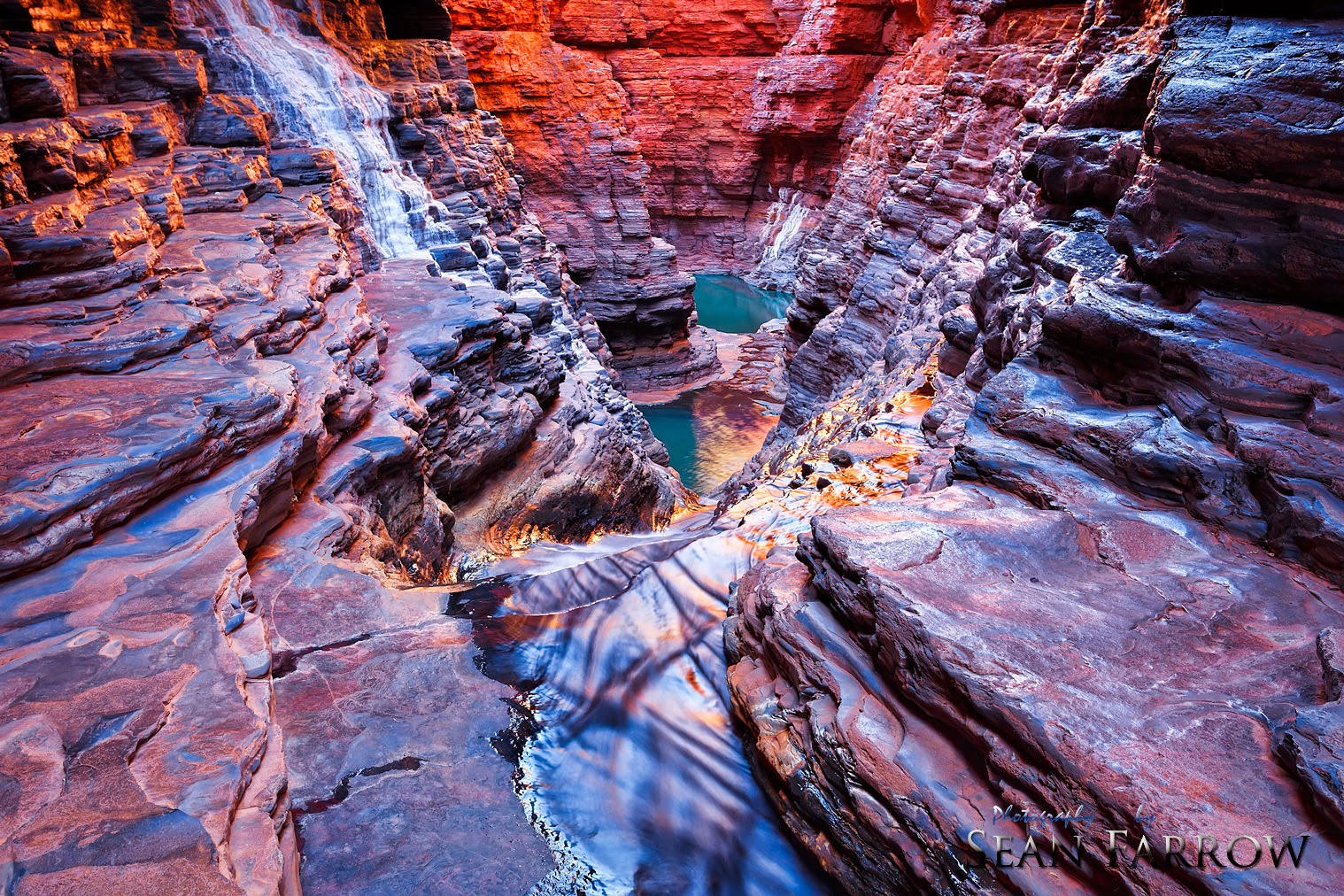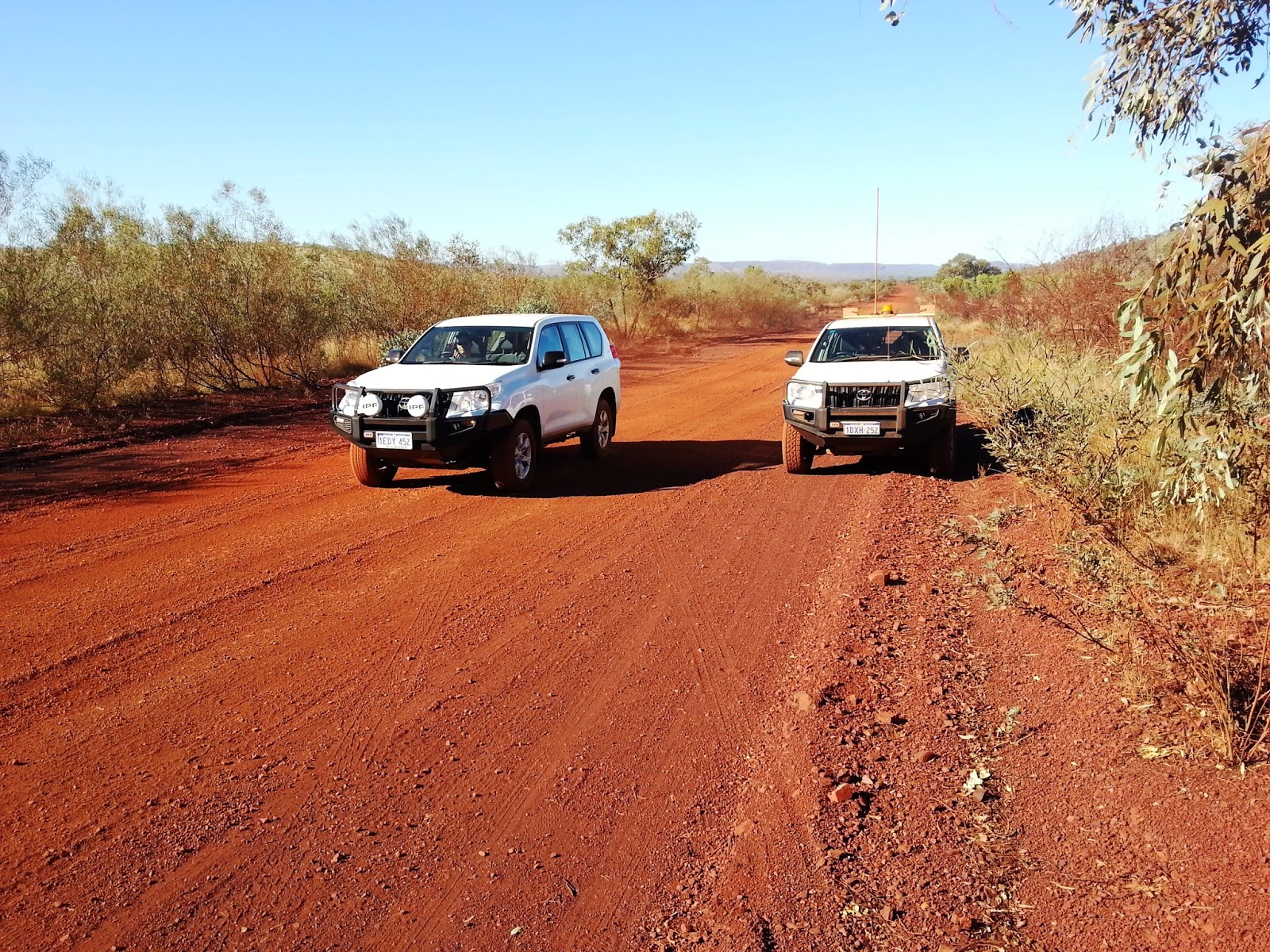 |
| Kermits Pool, Hancock, Gorge |
Hi everybody and welcome to the latest instalment of the Chronicles of Sean's Photography!
On the 9th of April I boarded a plane bound for Perth, Western Australia. This would be my first time visiting our Country's largest state, and my first professionally organised photography workshop, facilitated by Tom Putt of Inspire Landscapes. After an easy 3 hour flight I found my way to the gate to board my connecting flight to Paraburdoo, a small mining town in the remote Pilbara region of Western Australia, and the gateway to the spectacular Karijini National Park.
Karijini National Park is located in the remote Pilbara region of Western Australia. The area is characterised by the sweeping plains of red dust, the famous Hamersley Ranges and the deep river gorges carved out by millions of years of erosion, The Pilbara also hosts the oldest known exposed rock on earth, dated at a staggering 3.5 billion years old. So old in fact that no fossil records are found as life hadn’t progressed beyond algae and bacteria at this stage of earth’s infancy.
My first impression of Western Australia was a baking heat as I exited the plane onto the tarmac. There I met up with our tour organiser and master landscape photographer Tom Putt, who was joined for this week by the award winning photographer Paul Hoelen. I also met with the fantastic and talented group of people I'd be spending the next 5 days with.
On our drive from Paraburdoo to the awesomely equipped Karijini Eco Retreat, I found out my tent-buddy for the next few days was also named Sean. The normally 90-minute drive ended up taking a few hours as we continuously stopped to admire and photograph the landscape around us. As we all checked in and found our way to our fancy schmancy eco-tents, the excitement of being in such a spectacularly stark location was palpable. A massive bonus was finding out the menu at the retreat was full of all sorts of delicious options. So over dinner Tom and Paul led us through their safety briefing and filled us in on what the next few days would entail. Soon enough though, everyone was ready for bed, and a 4:30am start was waiting on the other side of sleep.
At 4:30am we were rudely awoken by our alarms as we grabbed our gear and made our way bleary-eyed in the pitch black to the vehicles to shoot sunrise at our first location, Kalamina Gorge. After a short drive, we made our way through the darkness into the gorge, where we were met by subtle cascades and towering cliff faces bathed in the soft morning light. After shooting every angle we could find we made our way back to the retreat for breakfast and brief of our next location, Hamersley Gorge. Lunch was served and a quick editing session ensued in the heat of the day, we then headed out to our next shoot.
We soon split up into 2 groups, one winding up the gorge from the bottom, and us climbing down from the top over slippery ancient slate. In the middle was a beautiful rock pool large enough to swim freely, so that's what we did! Soon we had our first encounter with what we'd dub "The Bikini Brigade", young tourists from all around the world enjoying the stunning surrounds. We all took turns photographing a spot called "Spa Pool", and exploring the abstract surroundings we'd found ourselves in. As we made our way back for dinner we stopped at a spot overlooking the expanse of the Hamersley Ranges and lined up our tripods and fired off shot after shot of the sunset.
The next day after breakfast and a quick sunrise shoot, we again split up and half of us ventured into the famous Hancock Gorge while the other half began their hike in the equally stunning Weano Gorge. Paul was leading us during the hike into the gorge to visit the beautiful "Spider Walk" and "Kermits Pool". We made our way into the chasm and began a trying free-climb around a rock embankment to a location called "The Amphitheatre". After shooting there for a short while we made our way down the slippery spider walk, which meant walking with your hands and feet pressed precariously into the dry rock sides of the gorge, while water cascaded down the rocks between your legs. Stepping on the wet rock felt like walking on the ice I'd encountered in the Arctic 4 months earlier, so caution was the name of the game. After a few meters the gorge opened up and we spied Kermits Pool, a stunning turquoise rock pool with flowing cascades and towering walls. To say we photographed this location to death would be an understatement. After another swim and testing our dry-bagged equipment by floating our camera bags through the water during our return, during which I made a wrong turn and had to climb and hike out of the gorge along a rougher route, we headed off for lunch and to shoot the sunset and numerous amazing native fig trees at Dales Gorge.
The following day we started with another sunrise shoot around the retreat, taking in the soft light. After breakfast we made our way into Weano Gorge. Weano included much more swimming with our dry-bagged camera equipment floating along ahead of us. Tom had given us the challenge to photograph a particular spot by 10am, where the light literally glows on the iron oxide rocks... challenge accepted, and completed. Weano Gorge is also the home of "Handrail Pool", a spectacular expanse of water accessible by climbing down and wet and slippery rock slope with the help of a handrail attached to the edge of the walls. After lunch and another quick editing and q&a session, we made our way out to the visitors centre for some education about the history of the park, and then on to Oxer Lookout. This location overlooks a location called "Junction Pool", and the vertical vista is absolutely stunning. At the junction, Hancock Gorge, Red Gorge, Joffre Gorge and Weano Gorge meet over 100 meters (300ft) below the lookout. It was a particularly difficult location to shoot as the difference in light between the top and bottom of the lookout was quite wide. We made our way back to a nearby picnic location for an awesome BBQ dinner prepared by Sean and Tom (and his pink feather boa), and a couple of wonderful image presentations by both Tom and Paul.
Another early start and Tom took us out to Knox Gorge lookout for sunrise as Paul took another group back into Hancock Gorge for a 2nd shoot. The sun slowly rose, bathing the scenes before us in a soft, warm light. After the sun had risen we explored and photographed a burned out section of land, amazed at natures restorative powers. We then returned for our final Karijini breakfast, and to pack up our eco-tents and meet in the common area for some more photo processing and a critique/q&a session. Tom asked us to quickly process 5 of our favourite shots from the trip, which were then viewed on a large projector screen, and comments and constructive points were made about everyone's shots, including Tom's and Paul's. Once the session was complete, we all enjoyed some ice cream (we'd cleaned out the retreats supply over previous days) and headed back into Paraburdoo for our departure flight... with an impromptu photo shoot along the way! At both Paraburdoo and Perth, we said our farewells and headed on our way.
All in all it was a thoroughly enjoyable, educational and exhausting workshop. Both Tom and Paul were warm and welcoming, funny, knowledgeable and took the time to work with each participant in depth. I'd highly recommend Inspire Landscapes workshops for landscape photographers of any level, and finance provided, I'd be on another one *cough*Iceland*cough* in a heartbeat! I personally came away with a different understanding of taking time to explore my surroundings, and a mountain of wonderful photographs!
Prints from Karijini will be made available at www.seanfarrow.com.au over the next few weeks!
Until next time...
 |
| Pilbara Sunset |
 |
| Kalamina Gorge |
 |
| Liquid Light, Hancock Gorge |
 |
| Behind Kermits Pool, Hancock Gorge |
 |
| Spa Pool, Hamersley Gorge |
 |
| Oxer Lookout |
 |
| Rock Detail, Hamersley Gorge |
 |
| "Get there by 10am..." Weano Gorge |
 |
| Fig Tree Roots, Dales Gorge |
 |
| That Tree |
 |
| Tom and Sean |
 |
| Mine-spec vehicles on the road. |
 |
| Paul... always shooting! Paraburdoo Airport. |

